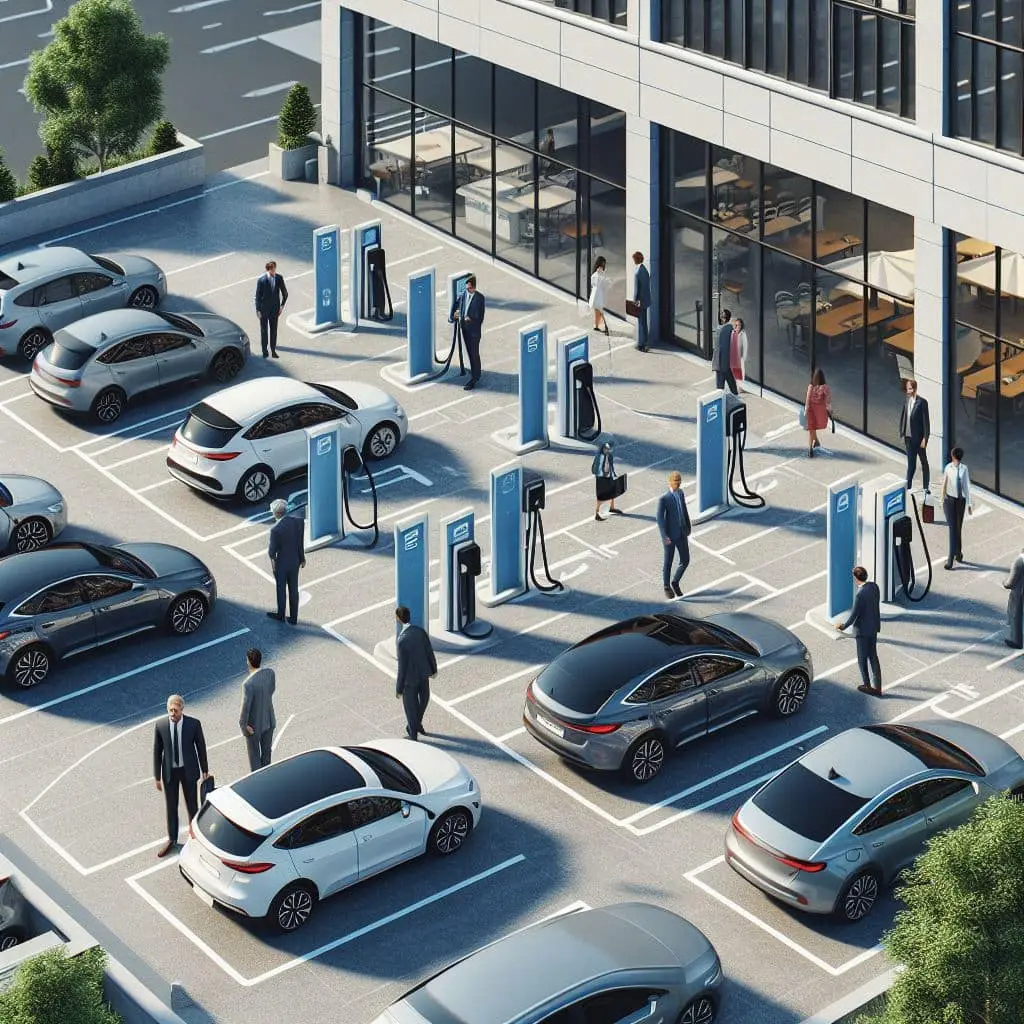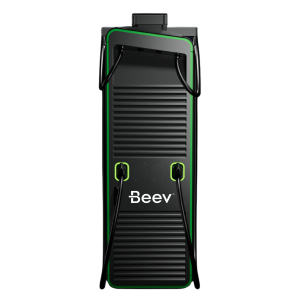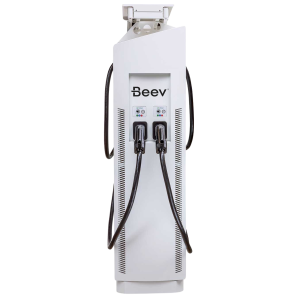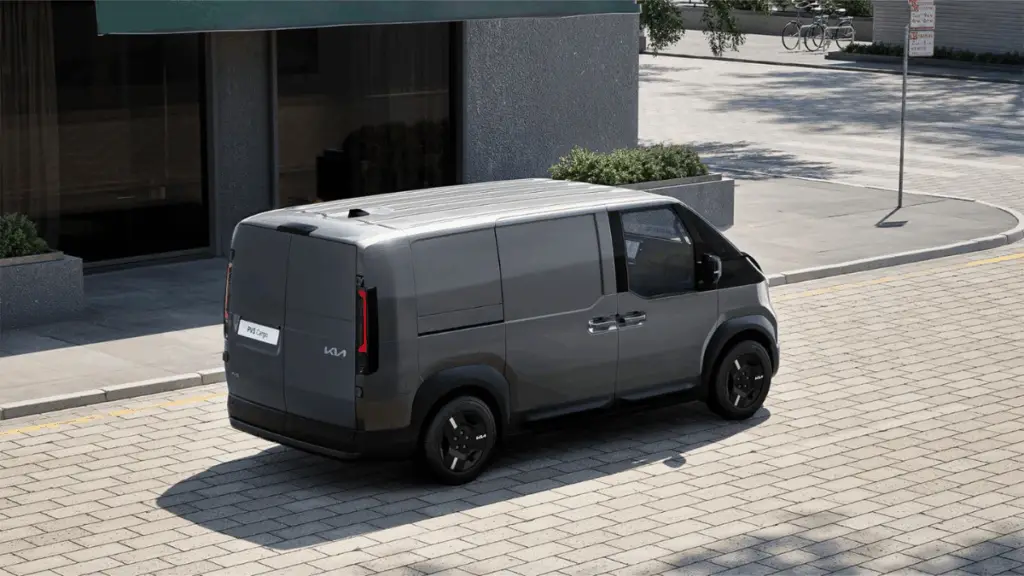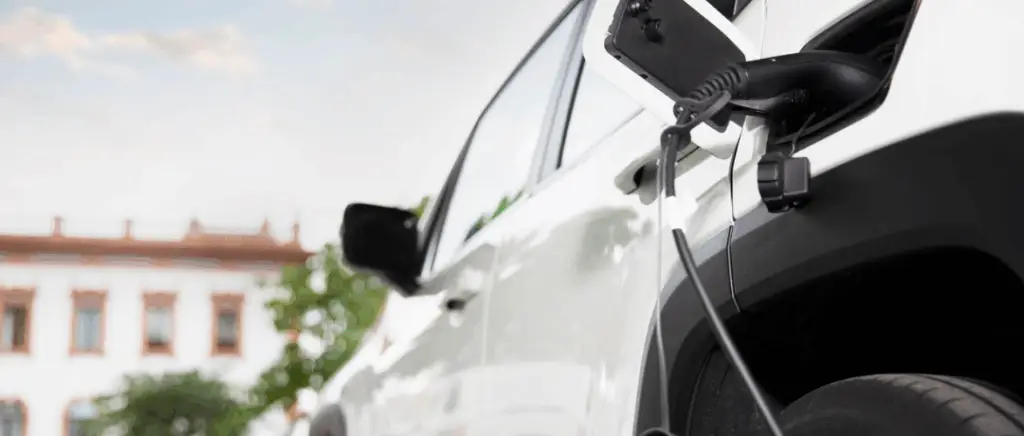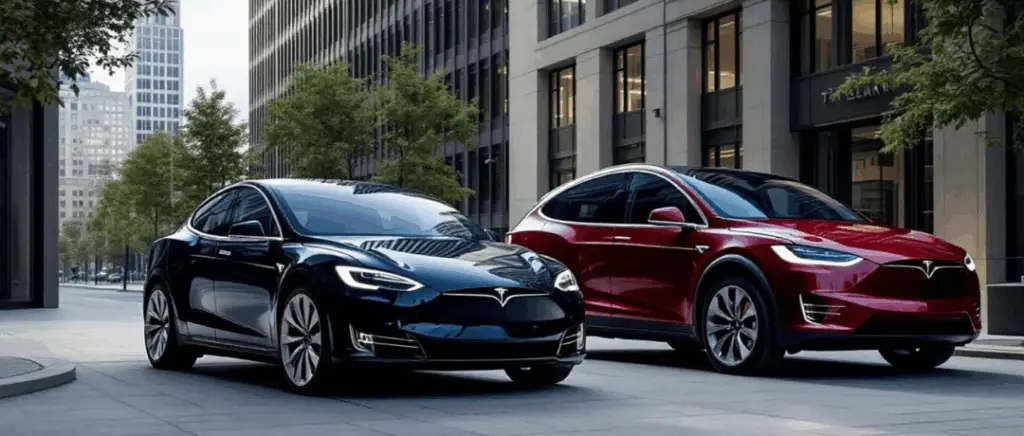Why should hotels install charging stations?

The installation of charging points in hotels is a response to a major change in travel habits, marked by the rapid growth in the number of electric vehicles. Offering this service is no longer a simple option, but is becoming a necessity to meet the expectations of a growing number of hotel guests. travelling by electric car.
This approach is in line with a logic of anticipating needs, positioning the hotel as a modern player attentive to sustainable mobility. In addition, theinstallation of recharging stations allows us to stand out from the competition and attract new customers, while retaining the loyalty of existing customers who prefer establishments offering top-up solutions tailored to their needs.
What are the legal requirements for installing charging points in hotel car parks?
French regulations now require hotels to equip their car parks with recharging points for electric vehicles, in accordance with the European Commission's "Electricity Directive". Mobility Orientation Act (LOM). From 1 January 2025, any hotel with a car park of more than 20 spaces will have to install a minimum of 5 % spaces equipped with charging points.with at least one space accessible to people with reduced mobility (PRM).
For car parks with more than 200 spaces, more stringent requirements apply, particularly in terms of disabled access. These obligations apply to both existing buildings and new constructions, with quotas adapted to the capacity of the car park. Failure to comply with these provisions could result in penalties and a loss of competitiveness in a market that is increasingly sensitive to environmental issues.
| OBLIGATIONS | ||
|---|---|---|
| No. of spaces to be pre-equipped for car parks with more than 10 spaces | ||
| Between 11 and 20 | > 20 | |
| Residential buildings (car parks inside or adjoining), new or undergoing major renovation, including the car park or its electrical installation. | 100% | |
| New non-residential buildings (car parks inside or adjoining) or those undergoing major renovation, including the car park or its electrical installation. | 20% of seats including 2%, with a minimum of one charge point, accessible by PRM |
|
| New mixed-use buildings or buildings undergoing major renovation* (car parks inside or adjoining) with predominantly residential use | 100% | These same provisions apply pro rata to the number of spaces reserved for residential or non-residential use. |
| New mixed-use buildings or buildings undergoing major renovation* (car parks inside or adjoining) with predominantly non-residential use | 20% of seats including 2%, with a minimum of one charge point, accessible by PRM |
|
See also our article :
What are the advantages for customers of offering recharging stations?
Offering recharging points has a number of advantages for both guests and the establishment. For guests, it's first and foremost a convenience that guarantees peace of mind: they can recharge their vehicle during their stay and leave with peace of mind, without having to search for an outside charging station. This offer significantly enhances the customer experience, particularly for business travellers and families on the move.
For the hotel, it's an opportunity to increase its occupancy rate, generate additional income through billing for the service, and build customer loyalty. What's more, the presence of charging stations enhances the hotel's image, positioning it as committed to the ecological transition and attentive to the challenges of sustainable mobility.
How can the installation of kiosks improve the hotel's image?
The installation of charging stations conveys a modern, innovative and responsible image of the hotel. It demonstrates a concrete commitment to the energy transition and to reducing greenhouse gas emissions.carbon footprintThese values are increasingly sought after by our customers. This approach enables the establishment to position itself as a proactive player in sustainable mobility, enhancing its appeal to environmentally conscious customers.
What's more, the communication surrounding this initiative offers an undeniable marketing advantage, by promoting the hotel on booking platforms and specialist comparison sites. Lastly, investing in recharging infrastructure helps to increase the property's value and achieve the hotel's targets. the company's CSR objectivesThe Group's commitment to sustainable development is based on the principles of sustainable development, while meeting the growing expectations of its stakeholders in terms of sustainable development.
What are the different types of recharging point?
Charging stations for electric vehicles fall into several categories, depending mainly on how they are installed, their power and the type of current used. Firstly, there are wall-mounted charging points, often installed inside buildings or on their facades, ideal for discreet, effective integration into hotel car parks. Stand-mounted bollards, on the other hand, are suitable for outdoor spaces or open car parks where wall-mounting is not possible.
From a technical point of view, there are terminals operating in alternating current (AC)These are generally used for normal or accelerated recharging, and direct current (DC) terminals for rapid recharging. Finally, the choice of plug type (Type 2, CCS Combo, CHAdeMO) depends on compatibility with the most common electric vehicles in Europe.
What is the difference between a standard recharging point and a standard recharging point? fast terminal ?
The main distinction between a standard and a fast charging point is the power delivered and, consequently, the charging time. Standard chargepoints, often referred to as normal or accelerated chargepoints, deliver between 3.7 kW and 22 kW of alternating current (AC). They allow a vehicle to be recharged over several hours, making them ideal for overnight or long-term hotel stays.
On the other hand fast charging stations operate in direct current (DC) and offer a power rating of over 30 kW, with the most powerful models offering up to 350 kW. They are capable of recharging 80 % of a battery in 20 to 60 minutes, which is ideal for short stops or fast charging on long journeys. However, it's important to note that frequent use of fast charging can accelerate battery wear, and only compatible vehicles can benefit from it.
| Criteria | Standard charging point | Fast charging point |
|---|---|---|
| Power | 3.7 to 22 kW (alternating current - AC) | > 30 kW, up to 350 kW (direct current - DC) |
| Recharge time | Several hours (6 to 12 hours on average) | 20 to 60 minutes for 80 % of the battery |
| Ideal use | Overnight or long-term hotel stays | Short stops, need for rapid recharging |
| Compatibility | All electric vehicles | DC-compatible vehicles only |
| Effect on the battery | Gentle recharging, preserves the battery | Fast recharge, can accelerate wear |
| Installation costs | Moderate | High |
| Example of use | Guests staying at the hotel | Customers passing through, travellers in a hurry |
Top fast-charging stations for hotels
| Details | Alpitronic Hypercharger HYC400 | Wallbox Supernova 220 kW | Ecotap DC180 | Wallbox Supernova 150 kW | Wallbox Supernova 60 kW | Ecotap DC60 |
|---|---|---|---|---|---|---|
| Max. power | 400 kW | 220 kW | 180 kW | 150 kW | 60 kW | 60 kW |
| Charging time | Charge 200 km in ~5 minutes (depending on vehicle) | 200 km charge in 10 minutes | 100 km charge in ~5-6 minutes | 100 km charge in 7 minutes | 100 km charge in 15 minutes | Fast charge time (not specified) |
| Connectors | CCS2, CHAdeMO, CCS1, GB/T | CCS2, other options | CCS2 | CCS2 | CCS2 | CCS2 |
| Simultaneous Charge | 3 vehicles | 2 vehicles (110 kW each) | 2 vehicles (90 kW each) | 2 vehicles (dynamic) | 2 vehicles (30 kW each) | 1 vehicle |
| Dimensions (mm) | 2235 x 732 x 663 | 2000 x 868 x 453 | 2070 x 580 x 805 mm | 2000 x 868 x 453 | 2000 x 453 x 714 | 1440 x 610 x 350 |
| Weight (kg) | 375 - 775 | 400 | 500 | 400 | 290 | 235 |
| Recommended use | Service stations, motorway service areas, heavy vehicle fleets | Service stations, motorway service areas, urban hubs | Service stations, motorway service areas | Service stations, motorway service areas, high-traffic locations | Urban environments, public car parks, service stations | Public car parks, service stations, businesses |
| Key features | Very high power, energy efficiency > 97%, SiC semiconductors, dynamic load management, temperature range -30°C to +55°C | Compact, 10" touch screen, interactive lighting system, multiple payment options, modular maintenance, ultra-fast charging in a small footprint | Flexible design, simultaneous charging, compatible with a wide range of vehicles, high performance for strategic locations | Modular architecture (6 x 25 kW modules), 10" touch screen, interactive lighting, payment by credit card/QR code, high-efficiency operation (95%) | Modular design, 10" touch screen, interactive lighting, multiple payment options, ideal solution for urban areas | Adjustable power from 10A to 90A, compact design, flexible according to available resources, easy installation, aesthetic integration |
How do you choose the right terminal for your hotel's capacity and guests' needs?
The choice of charging point should be guided by a number of criteria specific to the hotel establishment. First of all, you need to analyse the number of guests staying at the hotel, the average length of stay and the configuration of the car park. For a hotel that mainly welcomes guests for one night or more, standard 3.7 to 7.4 kW charging points are generally sufficient, as they allow full recharging during the stay.
If the establishment receives passing customers or wishes to offer a recharging service during short breaks (restaurant, spa), it may be appropriate to install accelerated 11-22 kW charging points, or even a few fast charging points if the electrical capacity allows. It is also essential to take into account the electrical power available on site: an installation that is too powerful may require an adaptation of the electricity contract or upgrading work. Lastly, the hotel must ensure that the charging points are compatible with the main plug standards used by its customers' electric vehicles, so as to provide a universal, unrestricted service.
With Beev, Recma has installed its charging points with ease!
What are the steps involved in installing charging stations in a hotel?
Where do you start to determine your charging point requirements?
Determining requirements begins with an in-depth analysis of the customer profile and the intended use of the charging points. This involves assessing the number of electric vehicles likely to be recharged simultaneously, the average length of time customers spend parked and the frequency of use of the charging points. It is also important to take into account the seasonal nature of the hotel business and the outlook for demand. A technical study of the car park and the existing electrical infrastructure will help to identify constraints and possible extensions.
Finally, it is recommended that there should be room for growth in the number of electric vehicles in the coming years.
How do you select the ideal supplier for bollard installation?
The choice of supplier is based on a number of essential criteria. It is essential to ensure that theinstaller has IRVE qualificationA guarantee of expertise and regulatory compliance. The service provider's experience in the hotel sector, the quality of the equipment offered, its ability to provide tailor-made solutions and comprehensive support (from technical audit to maintenance) are decisive factors. Beev, which specialises in the installation of charging stations for professionals, stands out for the fluidity of its services and its recognised expertise.
You should also assess the responsiveness of the after-sales service, the availability of spare parts, and the possibility of integrating management and invoicing systems suited to the hotel business. Finally, by comparing several detailed quotes, you can optimise value for money and benefit from any financial aid that may be available.
What are the technical challenges associated with the electricity infrastructure?
One of the main technical challenges lies in adapting the hotel's electrical infrastructure to the power required by the charging stations. It may be necessary to reinforce the low-voltage main switchboard, install new electrical circuits or increase the power subscribed to by the energy supplier.
The distance between the main LV board and the terminal sites can also have an impact on the cost and complexity of the work. In addition, intelligent charge management is needed to avoid overloading the network, particularly during peaks in consumption. Finally, compliance with safety standards, the accessibility of chargepoints and compatibility with different types of vehicle and payment methods are all technical issues that need to be addressed to guarantee a reliable, long-term service.
What are the legal obligations and standards to be followed?
Since 1 January 2025, the French Law on Mobility (LOM) has required hotels with car parks of more than 20 spaces to equip at least 5 % of their spaces with charging points for electric vehicles, with at least one point accessible to people with reduced mobility (PRM). This obligation applies to existing establishments as well as to new buildings or major renovations.
The regulations also require compliance with strict technical standards, including NF C 15-100 for low-voltage electrical installations, which sets out the requirements for safety, design and protection of people and property. Bollards must also comply with international standard IEC 61851, guaranteeing their safety, performance and compatibility with electric vehicles.
What are the main safety rules for installing bollards?
Installation safety is based on several fundamental principles. Each terminal must be connected to a dedicated electrical circuit, protected by a suitable differential circuit breaker (type A or F, 30 mA) to prevent the risk of overvoltage and current leakage. It is essential to carry out an electrical diagnosis beforehand to check the capacity of the existing network and to anticipate any need for reinforcement. Dynamic load management is recommended to avoid overloading the network, especially where several vehicles are used simultaneously.
Basically, the installation must be entrusted to an IRVE (Recharging Infrastructure for Electric Vehicles), guaranteeing compliance with standards and user safety.
What labels or certifications are needed to guarantee compliance?
To ensure the compliance and reliability of charging stations, several labels and certifications are required or strongly recommended. IRVE certification attests to the installer's skills and the installation's compliance with regulatory requirements. The terminals must be CE certifieda guarantee of compliance with European standards, and meet IEC 61851 standards for safety and performance.
The ZE Ready or EV Ready labels guarantee that the charging points are compatible with the majority of electric vehicles and provide a high level of safety and interoperability. Finally, ISO 9001 certification can also be a criterion of choice to ensure the quality of the equipment manufacturing and installation processes.
How much will it cost to install the charging points and what funding is available?
How much does it cost to install a charging point in a hotel?
The cost of installing a charging point in a hotel varies mainly according to the power of the point, the number of units to be installed, the configuration of the car park and the specific needs of the establishment. For a wallbox-type terminal of up to 22 kW, costing between €1,000 and €2,000including supply and installation. If the hotel wishes to install a fast charging point (from 50 kW)The budget is generally between 3,000 and 15,000 euros per terminal.
Other factors can influence the price, such as the distance of the electrical connection, the integration of supervision or billing systems, and the need to adapt the existing electrical infrastructure. It is advisable to carry out a preliminary technical study and request several quotes to obtain an accurate estimate tailored to the hotel's configuration.
Finally, it is possible to reduce this cost thanks to financial aid, such as the ADVENIR subsidy, which can cover up to 50 % of the installation cost for car parks open to the public, with a ceiling of 1,700 euros per standard bollard.
Are there any subsidies or financial assistance available for the installation of charging points?
Yes, a number of subsidy schemes exist to reduce the cost of installation. The national ADVENIR programme is the main subsidy in France for hotels and businesses: it covers up to 50 % of the cost of supply and installation for car parks open to the public, with a ceiling of €1,700 per standard bollard.
For private car parks for fleets or employees, the subsidy varies from 30 to 60 % depending on the case. Other local or regional grants may also be available, as well as tax incentives. It is advisable to be accompanied by a certified installer to optimise the preparation of the application and maximise the subsidies obtained.
What return on investment can we expect after installing charging points for hotels?
Installing charging stations in hotels offers a tangible, multi-faceted return on investment (ROI) that goes far beyond mere regulatory compliance.
Direct and indirect income generation
Hotels can generate direct income by charging guests for recharging, or by renting sites to specialist operators. This approach provides a fixed or variable income based on the use of the charging points. At the same time, the presence of charging stations attracts new customers and increases the loyalty of existing customers, leading to an increase in occupancy rates and overall hotel sales.
Competitive differentiation and increased visibility
For many travellers, having charging points is becoming as important a selection criterion as Wi-Fi or parking. Being listed on booking platforms with the "recharging point" filter offers additional visibility and attracts a passing clientele, particularly drivers of electric vehicles, who prefer establishments that are equipped.
Increased occupancy and loyalty
Studies show that hotels equipped with charging stations see an average increase of 15 % in their occupancy rate. The possibility of recharging their vehicle on site encourages customers to extend their stay or to choose the establishment for their next trip.
Property enhancement and brand image
Installing charging stations helps to enhance the value of the property and reinforces the hotel's image as a player committed to sustainable mobility and the energy transition. It also meets the growing expectations of customers and partners in terms of social and environmental responsibility.
Rapid return on investment
Thanks to public subsidies (such as the ADVENIR programme), which can finance up to 50 % of the installation cost, the return on investment is accelerated. Some hotels that have benefited from subsidies have seen the number of people using their charging points rise from a few charges a month to several dozen a day, demonstrating the profitability of the investment, especially with the boom in the electric vehicle market.
In a nutshell, installing charging stations in a hotel is a cost-effective strategytoincrease revenues, d'attract a growing customer baseof vto enhance the establishmentt and strengthen its competitiveness in a fast-changing sector.
How do you manage and maintain charging points once they have been installed in hotels?
Managing recharging points in a hotel relies on the use of supervision tools to remotely control access, consumption and the correct operation of the equipment. Many software solutions offer dashboards for monitoring usage, generating reports and managing invoicing, whether on a flat-rate, time-based or kWh basis, depending on the hotel's policy.
It is advisable to entrust management and maintenance to a specialist operator or certified installer, who will also be able to provide software updates and intervene rapidly in the event of a malfunction.
How often should charging points be serviced?
The frequency of maintenance depends on the environment, the level of use and the type of bollard. In general, a monthly visual inspection is recommended to quickly detect any anomalies or deterioration. More thorough preventive maintenance should be carried out every six months, including cleaning, checking electrical connections and checking safety devices. Full annual maintenance is also recommended to ensure the longevity and reliability of the installation, especially in hotels where use may be intensive.
In difficult environments (humidity, pollution) or when used very frequently, it may be necessary to increase the frequency of checks.
How can we ensure that the terminals are working properly and resolve any faults?
To ensure that the kiosks are in good working order, it is essential to use quality equipment, carry out regular inspections and set up a remote monitoring system to detect any anomalies quickly. In the event of a fault, corrective maintenance must be carried out by a qualified professional, capable of diagnosing and repairing or replacing faulty components quickly to limit service unavailability. The use of connected solutions (cloud or mobile applications) also makes it possible to anticipate certain breakdowns thanks to predictive maintenance, which analyses usage data and flags up anomalies before they become critical.
It is advisable to train hotel staff in the basic use of the terminals and in the procedures for alerting guests in the event of a problem, to ensure optimum responsiveness.
Conclusion: what does the future hold for charging stations in hotels?
The future of charging points in hotels looks both inevitable and promising, driven by the energy transition and the rapid growth of electric vehicles. With the regulatory obligation to equip car parks for establishments with more than 20 spaces, recharging points are becoming a standard expected by customers who are increasingly aware of environmental issues and the practicality of the services on offer.
Beyond mere compliance, these infrastructures represent a real lever for differentiation and attractiveness. Hotels that incorporate high-performance, accessible recharging solutions significantly improve the customer experience, win the loyalty of customers who are sensitive to sustainable mobility, and position themselves advantageously in a fast-changing competitive market. The increase in the number of fast charging points, combined with intelligent charging management systems, will make it possible to offer users greater flexibility and comfort, meeting the expectations of both busy travellers and extended stays.
In addition, the integration of charging stations is part of an overall approach to social and environmental responsibility, enhancing the hotel's brand image and contributing to the value of its property assets. Future technological innovations, such as bi-directional recharging and integration with renewable energy sources, will further strengthen this dynamic.






























